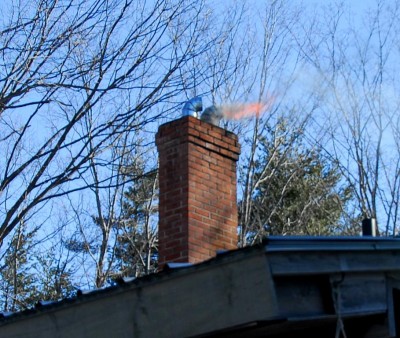
What Causes Chimney Fires and How to Prevent Them

So far in the fall of 2015, we’ve already read about two chimney fires in the western suburbs of Chicago.
The first took place Oct. 20, 2015, in an Elgin home in which wood and insulation inside the brick caught fire. About $53,000 in damage was done to the home. The second chimney fire occurred in Oswego just a few days later. Damage was minimal, and luckily no one was injured, including the family’s pets. In both fires, the outcomes could have been much worse.
Chimney fires are an all-too-common occurrence as fall turns to winter and homeowners light their first fire of the year. According to the latest statistics from the Chimney Safety Institute of America, in 2012, 21,200 unwanted fires involving fireplaces, chimneys, and chimney connections caused 20 deaths, 60 injuries, and about $93.6 million in damages nationwide. Even though the number of unwanted fires was down 4.5 percent from 2011, there is more work to do to educate homeowners with fireplaces.
What causes chimney fires?
The majority of chimney fires are caused by the build-up of soot and creosote in the flue. To avoid a chimney fire, a professional chimney sweep inspects your chimney and identifies issues that could cause a chimney fire, such as a creosote buildup and soot within the chimney lining.
A small fire inside of your chimney might be contained quickly; however, it can cause damage to the chimney lining. If the soot and creosote are not removed, more fires can occur and the damage may not be contained to the chimney next time, but include some of the chimney structure or combustible materials near the chimney, causing irreversible damage to your home.
Because a chimney fire is isolated in a small enclosed space, it can become very hot very quickly. The alarmingly high temperatures in a chimney fire allow for a quickly moving blaze which can destroy a home and even make it difficult for occupants to evacuate in time.
How to prevent a chimney fire
The best way to prevent a potentially catastrophic fire in your chimney is to schedule yearly cleanings from a certified professional sweep like Valley Chimney Sweep and Restoration. Our chimney sweeps will provide a thorough inspection and cleaning, pointing out areas of concern in your chimney and fireplace system that may call for repair.
Our chimney sweeps are certified, trained, and licensed. With 40 years in business, and two generations of the Dearborn family actively working in the family business, we appreciate long-term relationships with our customers, and even offer our Chimney Sweep for Life program to help you remember this important home event each year.
Schedule your cleaning today.
Back To Blog

